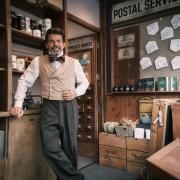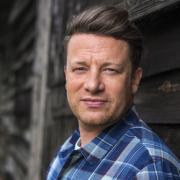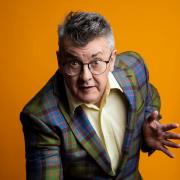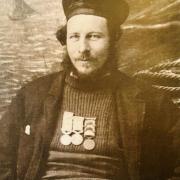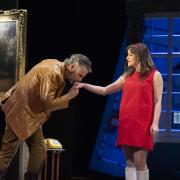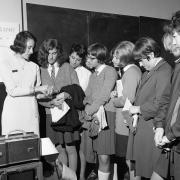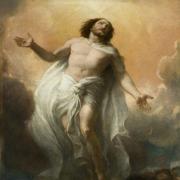As the Minories Gallery in Colchester opens its doors once again, a new free exhibition from Hayletts Gallery, Essex Artists Past and Present is showcasing late and contemporary artists in the county. ‘What better way to celebrate the reopening of the Minories than with an exhibition illustrating the wealth of talent we have in the county,’ explains Sally Patrick, director of Hayletts Gallery.
‘I hope the exhibition conveys how many Essex artists are an integral part of the history of British art; many of them have work in the Tate permanent collection. Unfortunately, I can’t capture them all, but I hope I have included a flavour of what Essex has to offer.’
From war artists to pioneers of pop art, innovators in printmaking and new ways of seeing the world, visitors can explore a broad selection of media including oils, watercolours, drawings, linocuts, woodcuts, ceramics and sculpture.
All artworks are offered for sale with subjects ranging from landscapes, seascapes and estuary views to still life, figures, abstract, surreal, historical buildings, boats and wildlife.
‘The setting is perfect; it’s art and history combined,’ adds Sally of the grade II listed building. The Minories was purchased by the Victor Batte-Lay Foundation in the fifties and part of the gallery’s permanent collection includes prominent artists including Camille Pissaro, Paul Nash and Cedric Morris; their works can also be seen in conjunction with the exhibition.
We talk to three very different artists exhibiting their work.

Chloë Cheese
English illustrator, painter and print-maker
Chloë’s childhood was spent in the pretty village of Great Bardfield. The daughter of artist and printmaker Bernard Cheese, and artist and illustrator Sheila Robinson, she grew up in the fifties and sixties surrounded by a community of renowned artists. The Great Bardfield artists included John Aldridge, Stanley Clifford-Smith, Audrey Cruddas and Marianne Straub. ‘Growing up among artists ensures you take making art seriously from an early age,’ recalls Chloë. ‘I have strong memories of visiting artists' studios with my mother but also of the artists looking at my drawings and making comments. They made Christmas cards to send to each other every year so my brother and I would draw a card for my mother and one for Charlotte and Edward Bawden.
‘One downside of my upbringing was that art school was a bit of a let-down, my tutors seemed quite dull compared to the neighbours in Great Bardfield so I am afraid I was not always a good student at first.
‘It seemed a natural progression to become an artist myself although my mother did warn me that it was not a secure way of earning a living, so I chose to study illustration rather than fine art.’
Chloë’s own style she explains is ‘based on free but closely observed drawings’. She will often find the extraordinary in the ordinary; in things that we might not even notice.
Having illustrated books including Antonio Carluccio's A Passion for Pasta and a children’s poetry book Walking the Bridge of your Nose with poems selected by Michael Rosen, the artist now spends her time making prints usually etching, and painting in watercolours, often choosing still-life subjects.

James Dodds
Painter and print-maker
Born in Brightlingsea, James trained as a shipwright in Maldon. As a child, when asked what his father did, he replied, ‘He's a shipwright.’ ‘In fact, his father was the Radio Times illustrator Andrew Dodds. ‘I wanted to be like everybody else,’ he recalls. His apprenticeship he says was a rebellion against his artistic background. ‘It's difficult following your father into anything, but it has given me the subject matter for my art ever since.’
His work encompasses not only painting but imaginative printmaking with an enduring theme of the sea. ‘I think having an understanding about your subject matter, knowing how something is put together really helps. But, ultimately, you're still dealing with colour, texture and design.’
His lino prints evolved over time. ‘To begin with it was a compositional thing. I wanted to have the views up and down the beach or the river, it brings your eye back into the picture. People have described it as a bird's eye view and that I've compressed time and space. A photograph will take a picture of one moment in time and a lot of my pictures are an accumulation of time, like a memory of a place.’
An exhibition at the Minories in 2001, heralded the beginning of James’ original paintings. ‘I had this great space. I had been struggling with a painting that was too complicated really and I just painted a blue boat over the top of it. It was just the kind of boat I helped build and I thought “this is more fun”. The finished work was a paired back painting rich in colour and tone of a single boat floating in space; he sold the painting straight away. He says of his distinctive works, ‘It’s a traditional shaped boat that has evolved over centuries, but I am looking at it in a contemporary way – it's something new out of something old. In a way my linocuts are studies evolved, but looking at them in a way that perhaps nobody else has done before.’

Pam Schomberg
Sculptor
Given the choice Pam says she would spend all day every day in her studio in Cuckoo Farm at Mile End, an art community where she continues to create and develop new work. The artist works in porcelain or stonewear. Although she admits it is tricky to work with, she says, ‘I love working in porcelain, it can be like building with skin, you lift it up and it collapses. But the quality you get with porcelain is very special. Otherwise, I work in stoneware which is much easier to build with. It will hold its shape, even with a tricky construction, so you can build bigger and stretch the clay; you can get really interesting textural things happening.’
Pam was influenced by her father, a bespoke tailor, and would watch him at work. ‘It’s cutting out clay much like he did in cloth, then building my individual pieces like he would when making a suit - laying out the patterns together. I was working for quite a number of years before I realised I did this. Although I will make a series, every piece is individual and all a bit spontaneous’.
The artist loves texture and pattern but says she really doesn’t know why she adds legs to her work. ‘People come into my studio and say they're probably all dancing at night. I've tried to make them without legs, but they look unfinished’.
Inspiration often comes from museums where she looks at fabric, amour and textures - strong influences include Klimt. ‘It’s all visual, looking at shape and form. I don’t tell stories while making but I do think about them once the piece is finished. I am very free-minded and like to give the work the chance to develop itself. When you open the lid of the kiln you’re never 100 percent certain what is going to be shining back at you. It can be quite exciting’.
Artists Past and Present runs from September 30 to October 14 at the Minories Gallery, Colchester. Entrance is free. For details go to haylettsgallery.com








